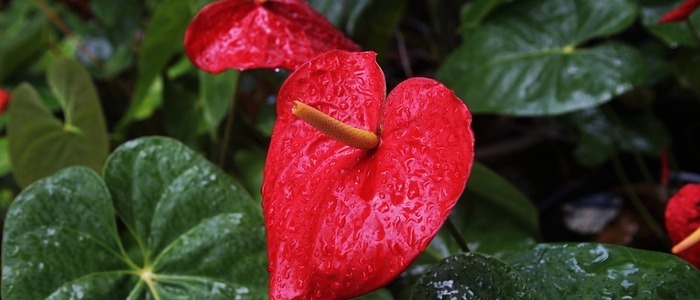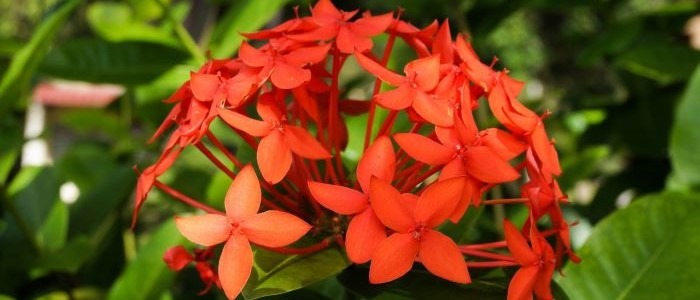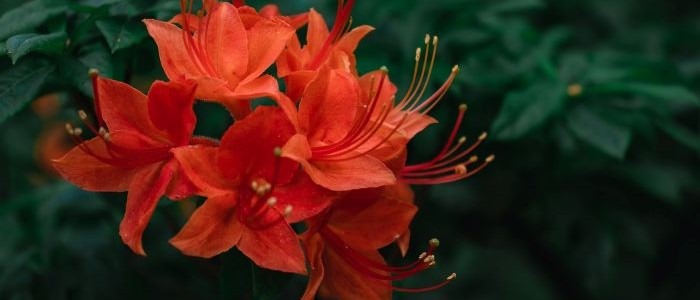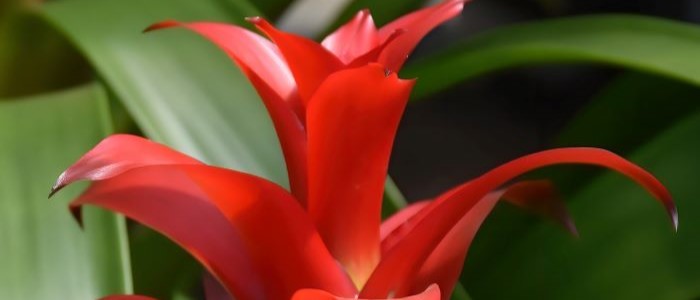When it comes to taking care of a red hibiscus plant, the first and most important step is selecting the right soil. This plant requires well-draining soil as too much water can lead to root rot. The best soil for this red house plant is a mixture of sand, loam, and compost. Additionally, it should be planted in an area with full sunlight as it needs at least six hours of direct sunlight per day in order to thrive.
The red hibiscus also needs plenty of moisture in order to remain healthy – a minimum of one inch of rain per week is necessary for optimal growth. If you’re not able to rely on natural rainfall, regular watering is essential for keeping the soil moist but not soggy.
Regular pruning and fertilizing are also important for taking care of your red hibiscus plant. Pruning helps promote new growth and keep the size manageable while fertilizing provides essential nutrients and minerals that help promote healthy blooms throughout the season.
Finally, make sure your red hibiscus is planted in an area away from strong winds as these can cause damage to the delicate flowers and leaves. Additionally, strong winds can dry out the soils faster which could lead to drought conditions if not addressed quickly enough.
By following these simple tips for caring for your red hibiscus plant, you’ll be able to enjoy its vibrant blooms year after year!
Red Hibiscus Plants Frequently Asked Questions
How often should you water the red hibiscus?
It is recommended to water the red hibiscus once or twice a week, making sure that the soil remains evenly moist. It is also equally as important to avoid overwatering as it can lead to root rot and other issues. Monitoring the moisture level of the soil and adjusting the watering schedule accordingly is essential for the health of the red hibiscus.
What kind of fertilizer do hibiscus plants need?
Hibiscus plants generally require a well-balanced fertilizer that is high in phosphorus. This is because phosphorus promotes blooming and enhances the overall health of the plant. It is recommended to use a slow-release fertilizer specifically formulated for flowering plants, ensuring a steady supply of nutrients over time. Additionally, hibiscus plants benefit from a fertilizer with a slightly acidic pH level to mimic their preferred soil conditions.

Red Hibiscus Watering and Sunlight Needs
A red hibiscus plant needs plenty of water to thrive, but not too much that the soil is constantly soggy. The ideal watering schedule for a red hibiscus plant is to water it deeply but infrequently. When you do water, make sure to drench the soil until it’s moist all the way through; avoid shallow watering as this can cause root rot. You should also use lukewarm or room temperature water when you water your plants, as cold temperatures can shock them.
In addition to regular watering, red hibiscus plants need lots of sunlight to stay healthy and bloom with vibrant flowers. These plants require a minimum of six hours of direct sunlight each day and should be placed near a south-facing window if possible. If they don’t receive enough light, their leaves will start to yellow or look duller in color than usual. Too little sun can also stunt growth and prevent flowering.
It’s important to note that these plants are sensitive to strong winds, so keep an eye on the forecast if you live in an area prone to gusty weather. If you expect high winds or storms, bring your plant indoors until the storm passes or protect it from strong gusts with some kind of shelter or windbreak outdoors.
When caring for a red hibiscus plant, these two elements –watering and sunlight – are key for keeping your plant healthy and blooming with beautiful flowers during the growing season!
How To Propagate the Red Hibiscus Plant
Propagation is the process of growing a new red hibiscus plant from an existing one. There are two main methods of propagation – planting from seed or taking cuttings from a healthy plant. When planting from seed, it is best to start them indoors in a pot before transferring them to the garden. The soil should be kept moist but not soggy and the environment should be warm and humid for the seeds to germinate successfully.
Cuttings should be taken from healthy plants and planted directly in the garden or into an individual pot for transplanting later on. To promote successful growth, use sharp scissors or pruning shears to take a 6-inch cutting, leaving at least three leaves attached to each cutting. Remove any flowers and buds as these can reduce energy levels that could otherwise be used for root formation. The soil should be kept moist but not soggy during this time to support the cuttings while they take root.
If you are planting your red hibiscus in pots, it is important to pick containers with adequate drainage holes so that excess water can escape easily and prevent roots from rotting due to too much moisture in the soil. As with all plants, regular fertilization is necessary for optimal health; using organic compost every two months will provide essential nutrients for leafy growth and abundant blooms throughout the season.
By following these propagation tips, readers will have all the information they need to successfully propagate their own red hibiscus plants! With the right care and attention, readers can enjoy vibrant blooms year after year with this stunning tropical flower!
Pruning and Fertilizing Tips For Red Hibiscus
Pruning and fertilizing are two of the most important steps in caring for a red hibiscus plant. Pruning helps to maintain the shape of the plant, encourages new growth, and keeps it healthy. When pruning, it is important to remove any dead or diseased branches and to deadhead spent flowers as they appear. It is best to prune in the early spring before new buds begin to form.
Fertilization is also an important part of caring for your red hibiscus plant. The best type of fertilizer to use is a balanced organic compost that is low in nitrogen but high in phosphorus and potassium. Fertilize your plant every 6-8 weeks during its growing season, applying the fertilizer around the base of the plant rather than directly on the leaves or stems. When applying fertilizer, avoid over-fertilizing as this can cause yellowing or dropping leaves as well as stunted growth.
Pruning and fertilizing are essential steps in caring for a red hibiscus plant. Prune regularly in early spring for optimal health and blooms while avoiding over-pruning which can stress out the plant. When fertilizing, select an organic compost with low nitrogen but high phosphorus and potassium levels and apply it every 6-8 weeks during its growing season. Finally, always be sure to avoid over-fertilizing which can lead to yellowing or dropping leaves as well as stunted growth.
Red Hibiscus Common issues pests and diseases
Caring for a red hibiscus plant requires vigilance to ensure that it remains healthy and blooms with vibrant flowers year after year. Unfortunately, the plant is vulnerable to pests and diseases that can damage its health or even kill it. It is important to be aware of the types of pests and diseases that can affect a red hibiscus plant so you can be prepared to act quickly if any signs of trouble arise.
The most common pests include spider mites, aphids, and mealybugs. Spider mites feed on the sap from the leaves and cause them to become yellow or brown. Aphids feed on new growth and leave behind sticky honeydew which can attract ants. Mealybugs are small white insects that suck sap from the leaves, stems, and buds of plants. All three pests are usually spread by airborne spores but they can also be spread through contact with other infested plants.
Fungal diseases are also a concern when caring for red hibiscus plants as they thrive in warm, moist conditions. The two most common fungal diseases are mildew and rust which both cause yellow spots on the leaves of affected plants. Mildew is caused by too much moisture around the foliage while rust is caused by poor air circulation around the leaves leading to poor drainage which encourages fungus growth.
To prevent root rot due to over-watering it is important not to let the soil get soggy between waterings and keep an eye out for wilting or yellowing leaves as this could indicate over-watering or poor drainage in your potting mix. It is also important to inspect your plant regularly for any signs of trouble such as discolored or deformed leaves as well as white webbing on stems or undersides of leaves which could indicate an infestation from spider mites or mealybugs.
Finally, when planting or re-potting use sterile potting soil free from weeds, bugs, and disease organisms for best results in protecting against pests and disease problems down the road. With proper care and attention you can help ensure your red hibiscus plant will remain healthy even if exposed to common pests and diseases so you can enjoy bright blooms year after year!
Conclusion
Caring for a red hibiscus plant is a rewarding and enjoyable task that can bring year-round beauty to your garden. With the tips outlined in this blog post, you should be well-equipped with the knowledge you need to successfully care for your red hibiscus plant. Whether you are propagating from seed, pruning for optimal growth, or fighting pests and diseases, these tips will ensure your red hibiscus remains vibrant and healthy.
As a takeaway, remember that location is key when planting a red hibiscus plant: find an area with access to six hours of direct sunlight and adequate drainage. When pruning and fertilizing, do so sparingly as overdoing it can lead to yellowing leaves or stunted growth. Finally, inspect the plant regularly for signs of trouble and use sterile potting soil when planting or re-potting.
If you’d like more information on caring for your red hibiscus plant, there are plenty of resources available online such as books on gardening or articles written by experienced gardeners. We invite comments or questions from readers who have had success with their own plants – please share your stories!
Thank you for taking the time to read this blog post! We hope that our comprehensive guide has helped equip you with the knowledge needed to ensure that your beautiful red hibiscus blooms year after year.
Other House Plants With Red Flowers













